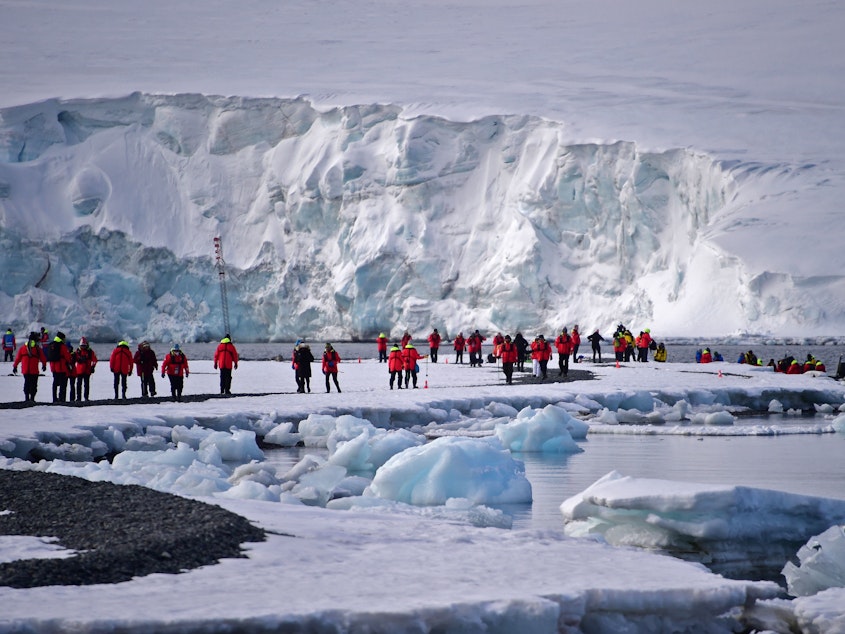Soot is accelerating snow melt in popular parts of Antarctica, study finds

Soot pollution is accelerating climate-driven melting in Antarctica, a new study suggests, raising questions about how to protect the delicate continent from the increasing number of humans who want to visit.
Researchers estimate that soot, or black carbon, pollution in the most popular and accessible part of Antarctica is causing an extra inch of snowpack shrinkage every year.
The number of tourists visiting each year has ballooned from less than 10,000 in the early 1990s to nearly 75,000 people during the austral summer season that began in 2019, according to the International Association of Antarctica Tour Operators.
"It really makes us question, is our presence really needed?" says Alia Khan, a glaciologist at Western Washington University and one of the authors of the new study, which was published in the journal Nature Communications. "We have quite a large black carbon footprint in Antarctica, which is enhancing snow and ice melt."
Black carbon is the leftover junk from burning plants or fossil fuels. Soot in Antarctica comes primarily from the exhaust of cruise ships, vehicles, airplanes and electrical generators, although some pollution also travels on the wind from other parts of the globe.
The dark particles coat white snow and soak up heat from the sun the way a black t-shirt does on a warm day.
The blanket of dark bits exacerbates melting that was already happening more quickly because of global warming. When snow and ice are pristine, they reflect an enormous amount of sunlight before it can turn into heat.
"These are the mirrors on our planet," says Sonia Nagorski, a scientist at the University of Alaska Southeast who was not involved in the new study.
When those mirrors are covered in a film of dark bits, they are less reflective. That means more heat is trapped on Earth, accelerating melting and contributing to global warming.
Soot is also a huge problem at the other pole. Black carbon pollution has plagued Arctic communities for decades. Oil and gas operations in Alaska, Canada and Arctic Russia and Europe release enormous amounts of pollution compared to tourists and researchers.
As sea ice melts, there is also more air pollution from commercial shipping in the region. And massive climate-driven wildfires spread soot across huge swaths of the Arctic each summer.
All that soot is melting snow and ice which then drives sea level rise. And the soot itself pollutes the local air and water.
"Black carbon emissions are a big problem," says Pamela Miller, who leads the environmental organization Alaska Community Action on Toxics. "They're enhancing and increasing the rate of warming in the Arctic, [and] they present very real health effects to people living in the Arctic."
Circumpolar countries banded together to reduce their collective black carbon emissions by about a fifth between 2013 and 2018, and to study the health effects of black carbon exposure for Arctic residents.
Such collaborative international efforts may offer hints about how to limit soot pollution in Antarctica as well, especially as the continent gets more and more popular with both tourists and scientists.
As a scientist who personally visits Antarctica every year, Khan says she is troubled by her own research results. "I find this to be a very difficult ethical question," she says.
On one hand, she goes to Antarctica to collect crucial data about how quickly the snow and ice there are disappearing. "But then when we come to conclusions like this it really does make us think twice about how frequently we need to visit the continent," she says, "and what kind of regulations should be placed on tourism as well."
That could mean requiring that cruise ships and vehicles be electric, for example, or limiting the number of visitors each year. [Copyright 2022 NPR]



